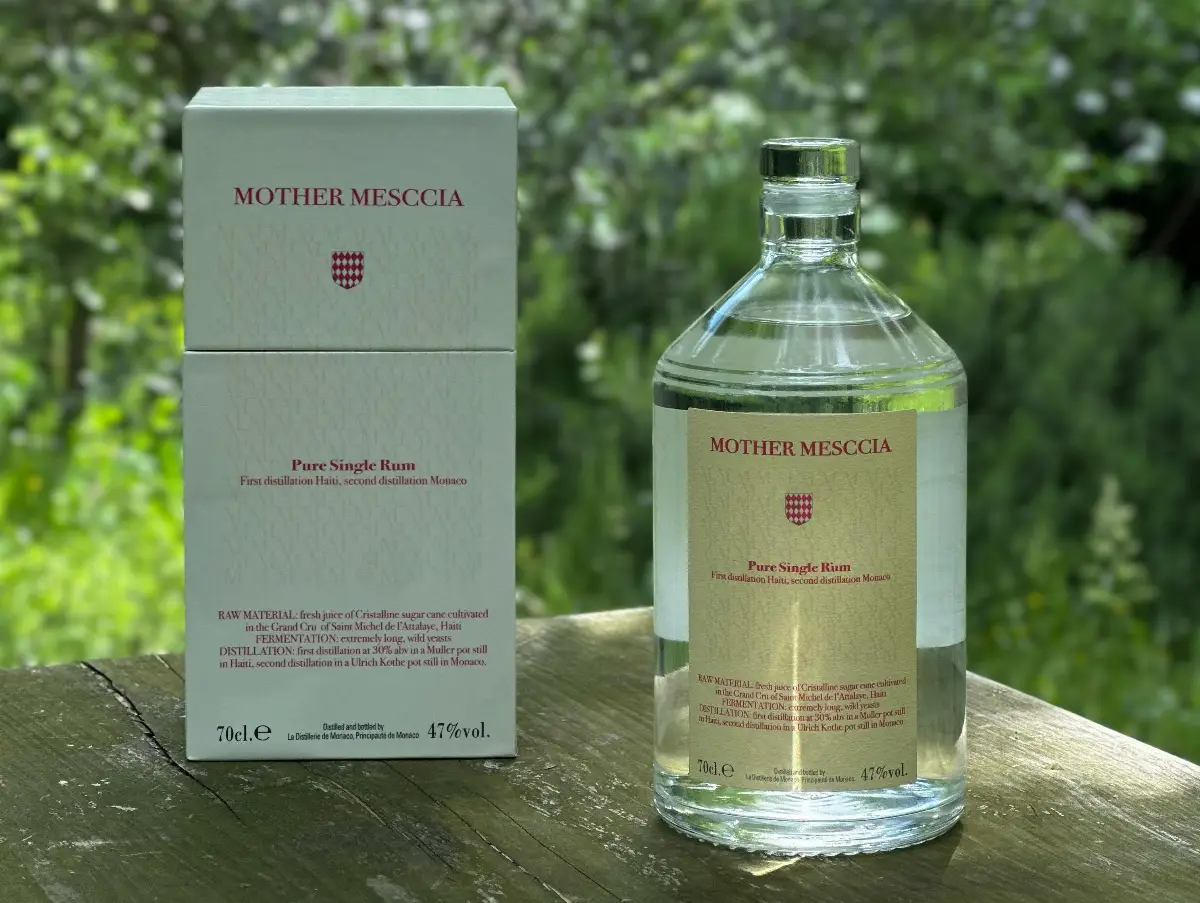
Mother Messcia, the rum of the Principality of Monaco revives in Haiti
The ancient Mesccia is reborn with the collaboration of Velier (Luca Gargano), for the creation of a superior quality rum

Mother Mesccia, the traditional rum of the Principality of Monaco revives thanks to the excellence of Haiti. And so, the Principality of the Grimaldi also rediscovers a treasure of its past: the ancient rum-based mesccia dating back to 1600. Everything begins with the ambitious project of bringing back to light that centuries-old tradition through an innovative production process, which unites the precious Haitian sugar cane to the history of Monaco.
When the Caribbean rum met the Monegasque taste
In the 17th century, the port of Monte Carlo was a lively trading centre. Genoese ships, in particular, transported rum from the Caribbean to the Mediterranean coast, bartering it with local citrus fruits, essential for the health of sailors. It was in Monaco that the custom of mixing rum with European spirits such as Vermouth and Marsala was born, giving rise to Mesccia, a dialect term that means "mixture". This drink became an integral part of the Monegasque culture, and then gradually fell into oblivion. Today, together with some enlightened Monegasque entrepreneurs and under the patronage of the Principality of Monaco, Velier has brought to light a lost treasure, reviving this tradition with a completely new approach.
The new Mesccia
The intention to revive Mesccia led to a collaboration with Luca Gargano, patron of the historic Genoese distributor Velier, who made available his vast knowledge in the world of rum to ensure the creation of a superior quality rum. The project starts from the idea that, in the 21st century, one could no longer be faithful to the old recipe of Mesccia, which included adding rum with Marsala and Vermouth. The solution that has been adopted respects in any case the Monegasque tradition, but in a contemporary key and is the reflection of the status of great distillates that today authentic and artisanal rums have acquired. Everything starts from a raw material of absolute excellence, the best sugar cane of Caribbean origin. The choice falls on the Haitian cane from which is produced the Clairin Sajous, or the Crystalline, a rare native variety and not hybridized.
The intuition of Gargano is to take advantage of the double distillation, in Haiti and then in Monaco, not to compromise the quality of the cane juice during the trip. The initial process is therefore the same as that from which the Clairin Sajous is born, the Haitian white rum handcrafted in the grand terroir of Saint-Michel-de-l'Attalaye starting from the Crystalline variety cultivated without chemistry, hand-picked, transported on a mule’s back and pressed in a small mill, more gently than the typical way of the French Antilles.
We then proceed with the spontaneous fermentations without selected yeasts, followed by the first distillation in a water bath in the Mueller alambic of Sajous. The result is a semi-finished product which is then transferred to Munich. Here, at La Distillerie de Monaco, the first and only distillery in the Principality in the Condamine district, takes place the second distillation in a Khote still, under the guidance of Master Distiller Philip Culazzo. This unique process allows to preserve the intrinsic qualities of the Haitian cane, culminating in a final distillate "made in Monaco".
Present and future of the Mesccia
The new Mesccia follows, therefore, a period of aging in ex-Vermouth and ex-Marsala casks, paying homage to the old recipe but with an eye to the evolution of contemporary taste. And future experiments with different types of Caribbean sugar cane and woods for refining are not excluded, opening new perspectives for this newly found treasure monegasque.
In the meantime, the white rum produced in Monaco has already been bottled, which is actually "la madre della Mesccia" and therefore takes the name of "Mother Mesccia", currently available as a white distillate of exceptional quality, bottled at 46 degrees, Ideal to taste smooth or mixed. Intense and fruity, with notes of sugar cane and fresh fruit, citrus and a subtle vegetable vein that gives elegance.
EFA News - European Food Agency